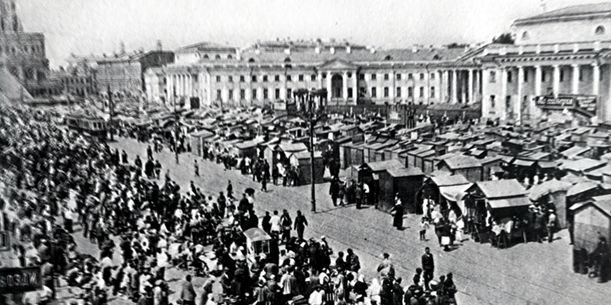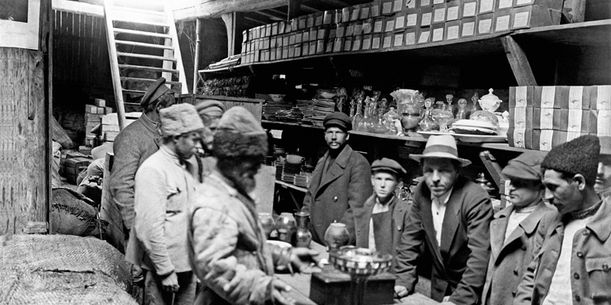The New Economic Policy
When the civil war ended, Russia was on the verge of collapse. Large sections of the peasantry, which accounted for some eighty per cent of the population, rebelled. In 1921, Lenin enforced the New Economic Policy (NEP) against resistance from within his own ranks. The NEP, which was in effect until 1928, represented a relatively liberal period for culture and the economy.
The forced regulation of the economy and violent requisition of agricultural produce (“War Communism”) was now replaced by a so-called natural tax. Private retail trade and small business enterprises were allowed. It was thus possible for the peasants to sell their produce independently. The result was an economic upturn, but also economic and social dislocations. Despite a certain degree of liberalization, the Bolsheviks neither relinquished their power monopoly nor refrained from the persecution of undesirable persons. Debates over policy were still possible for a time only within the Communist Party. The “NEP” was brought to an end in 1928 by Stalin’s “Great Change”.

The “Sukharevka” market in Moscow during the heyday of the New Economic Policy, 1926
Photo: Arkady Shaikhet; Source: Deutsches Historisches Museum, Berlin

Shop of a consumers’ cooperative in a village, 1926
Government support of cooperative forms of trade served as a counterbalance to private retail trade.
Source: ITAR-TASS, Moscow
